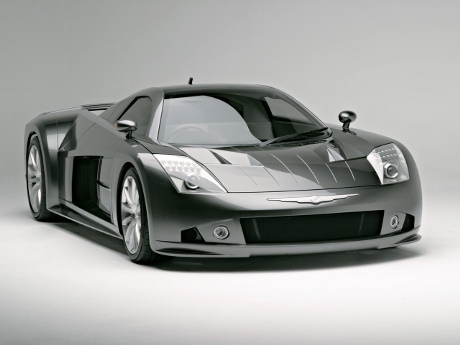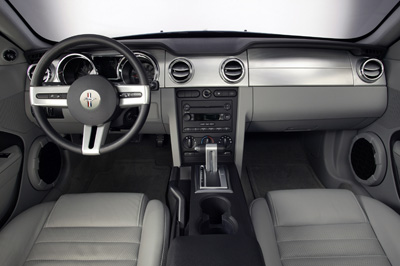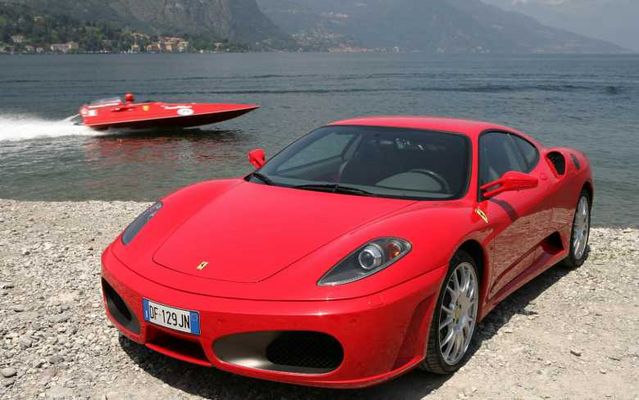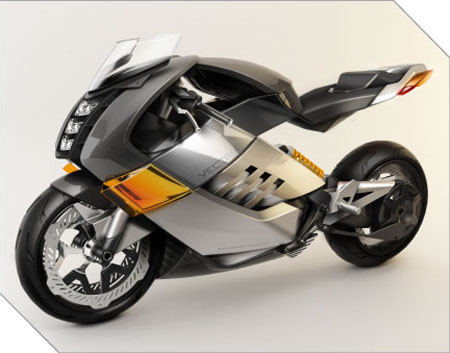Friday, April 30, 2010
Carros Tuning - Fusca Tuning
(Carros tuning - Volkswagen Fusca Tuning,rebaixado,modificado,
Dub Com Rodas Esportivas,DUB )
Foto Exclusiva
Carros Tuning - Fusca Tuning
(Carros tuning - Volkswagen Fusca Tuning,rebaixado,modificado,
Dub Com Rodas Esportivas,DUB )
Foto Exclusiva
Renault Fluence ZE Concept





Renault Fluence ZE Concept is an all-electric car with a range of 160km. The battery can be charged using one of three methods: a standard charge (between four and eight hours), a quick charge (20 minutes) or an immediate solution (three minutes) in the form of the exclusive 'Quickdrop' rapid battery exchange system.
Electric Mobility with a passion
The styling cues of Renault Fluence ZE Concept combine the design language of motoring pleasure with the visual signature of Renault's range of electric vehicles.
Renault Fluence ZE Concept possesses dynamic lines, highlighted by a fluid character line which sweeps from the headlights to the rear shoulders. It is 4,820mm long, has a wide track of 1,672 mm, is wellproportioned and exudes status-enhancing, elegant looks.
Its identity as an electric vehicle is expressed through the graphic treatment of the cooling ducts, the fins of which are reminiscent of heat transfer surfaces, and this theme is echoed in different ways in the design of the headlights and motor cover. The photovoltaic cells located on the panoramic roof, dashboard and rear parcel shelf form a geometric grid pattern which has been carried over to the grille and seat upholstery.
Renault Fluence ZE Concept also clearly belongs to Renault's 'family' of electric vehicles thanks to:
* its Atmosphere Blue body colour,
* the specific luminous blue signature which features in the curved lower part of the body sides,
* the use of LEDs at the front and rear,
* the design of its headlights,
* the recess behind the logo on the bonnet.
The headlights convey the same impression of softness suggested by the vehicle's overall lines and colour. They are a high-tech feature, too: beneath the 'eyelids' formed by the indicators, the beams of the main headlights are precise and piercing, with the light focused into a single beam by means of a system of prisms.
The vehicle's status-enhancing credentials are further emphasised by the employment of chrome trimming for the belt-line and grille, as well as by its impressive 21-inch wheels. Blue polycarbonate hubcaps seem to slot into the aluminium wheels to create a spiral form which channels the airflow and improves aerodynamic performance.
Luxury
Renault Fluence ZE Concept's warmly welcoming and refined interior is based on a combination of flowing forms, the use of soft, supple materials and a mottled ambience. Passengers are comfortably seated in four enveloping seats robed in light leather upholstery. The feet rest on a light blue translucent gel mat, while the brake and accelerator pedals, too, are covered in gel for a greater sense of comfort. When the doors open, the courtesy lighting recalls the luminous blue signature of Renault's electric vehicle range.
The technology used for the dashboard is sophisticated and intuitive. A TFT (Thin Film Transistor) touchscreen displays multimedia information and essential journey-related information such as the navigation function and the location of the nearest 'Quickdrop' station. The display also provides data specific to electric vehicles, such as range optimization information, for example.
The centre console incorporates two floating armrests and forms a fluid, rearward-flowing arc. At the front, the integrated central front armrest includes the stop/start button, the air-conditioning and volume controls, as well as the new touchscreen Samsung Jet phone. This phone comes with a hands-free function, and also enables occupants to listen to music or enjoy a film on the screens which have been built into the front seatbacks. The central rear armrest incorporates the climate control and volume controls, plus another Samsung Jet telephone and two remote controls for the two screens.
Renault Fluence ZE Concept is not respectful of the environment simply because it runs on electricity. Indeed, the entire car has been thought through to optimize energy use:
* the photovoltaic cells meet part of the car's energy requirements with a view to complementing the power supplied by the battery,
* the headlights use high-performance electroluminescent diodes which deliver an excellent trade-off between efficiency and energy consumption,
* the triple-zone climate control system allows occupants to achieve just the right settings for the two seats at the front and at the rear. The air vents also feature a dynamic lighting code, with blue representing the passage of cold air and red representing warm air,
* the car's aerodynamics have been meticulously honed to minimize drag, including streamlined rear-view mirrors with integrated rearward facing cameras, a completely enclosed underside incorporating a diffuser at the rear, and spiral-form wheel rims,
* Renault Fluence ZE Concept runs on low rolling resistance Michelin tyres.
Renault Fluence ZE Concept is powered exclusively by an electric motor located near the front axle, in conjunction with a lithium-ion battery positioned between the rear seats and the boot. Renault's designers and engineers worked closely together to develop a safe, practical vehicle capable of accommodating a large enough battery to ensure good range (160km), while also providing sufficient carrying capacity to cater for the requirements of an active family (327dm3).
3 Battery ( Charging Techniques )
The driver has three options when it comes to 'filling up' on energy:
* A standard charge: takes between four and eight hours, via a charging socket situated on the outside of the vehicle.
* A quick charge: in 20 minutes, using the same socket at specific charging points.
* The exclusive 'Quickdrop' system: three minutes at a rapid battery exchange station.
Renault Fluence ZE Concept provides a foretaste of the forthcoming electric version of Renault Fluence, and represents a solution to zero-emission motoring in the world of tomorrow.
Technical Data
* MOTOR
o Type: Electric
o Transmission type: Direct drive with forward/reverse inverter
o Maximum power: 70 kW (95 hp)
o Maximum torque: 226 Nm
* BATTERY
o Type: Lithium-ion
o Range : 160 km
* STEERING
o Power steering
o Electric variable-rate powersteering
* DIMENSIONS
o Rims: 21"
o Length: 4,820 mm
o Width: 1,882 mm
o Height: 1,520 mm
o Wheelbase: 2,696 mm
o Front/rear track: 1,672/1,672 mm
o Front/rear overhang: 996/1,135 mm
o Unladen weight: 1,600 kg
o Tyres: 175/55 R21
o Boot volume (VDA): 327 dm3
* PARTNERS
o Body: Protostyle
o Tyres: Michelin
o Sealing: Rehau
o LED lighting: Osram
Renault Clio Campus




New front-end styling
Renault Clio Campus features a new visual identity, with Renault's design team building on the original design which has proved so popular with customers to give it a more modern and more dynamic feel. The redesigned front bumper and grille have been redesigned. The trihedral panel behind the logo has been dropped and the bottom air intake has been modified to highlight the front end's personality. The juxtaposition of curves and horizontal lines adds a distinctly elegant note, while the foglamps are now incorporated in the bumper and crystal headlamp masks have been added. The decorative black B-pillar trimming gives a more harmonious, flowing aspect to the sweep of the side windows.
Renault Clio Campus is equipped with new flatblade-type windscreen-wipers, and the bigger exterior mirrors not only minimize blind spots but also comply with current rear view legislation. Dynamique versions come with body-colour exterior door handles, exterior mirrors and rear hatch trim, with 15-inch Alyum aluminium alloy wheels and metallic paint available as options.
Sportier upholstery
New cloth upholstery with a black and silver interwoven pattern has been introduced for the most extensively-equipped level's sporty bucket seats. The lateral air-vents, speedometer, rev-counter, gearlever, handbrake and interior door handles are picked out in satin-finish chrome paint, while the instrument needles are red.
Two petrol engines, two diesel engines and one LPG engine (depending on markets)
The Renault Clio Campus range includes a line-up of small capacity engines which all deliver responsive performance and fuel efficiency.
Two petrol engines (1.2 60 and 1.2 16V 75) : responsive performance, economical to buy and run.
Two diesel engines: the dCi 65 and the dCi 85 both emit less than 120g of CO2/km (115g/km and 111g/km respectively).
An LPG version of the 1.2 60 engine is also available. LPG (Liquefied Petroleum Gas) is clean and economical, and produces less polluting emissions than a petrol engine, while its CO2 emissions are similar to those of a diesel powerplant (126 g/km). This quiet engine runs on either petrol or LPG, allowing the driver to switch freely from one mode to the other at any time. Its total range is consequently even longer, and a light on the dashboard tells the driver which type of fuel is being used at any given moment.
An economical, ecologically friendly vehicle
All the different versions of new Renault Clio Campus comply with the three criteria required to qualify for the Renault eco² signature. The two dCi versions are eligible for the French state's eco-bonus of €700, while the LPG version qualifies for the special €2,000 eco-bonus.
Incontestable quality and reliability
Like all the models which make up Renault's small car range, Renault Clio Campus offers best-level quality and reliability. As a model, it has come of age and its robustness and build-quality have long been widely praised. Renault Clio Campus benefits from the vast experience and expertise Renault has gained with Renault Clio II since 1998 and incorporates the very latest design standards applied by the brand to all new projects.
A compact, versatile hatchback
Renault Clio Campus is built on the same proven platform which has been so highly acclaimed since the introduction of Clio II in 1998, and today still with new Twingo since 2007. This platform delivers a first class compromise between comfort and dynamic performance, and enables Renault Clio Campus to stand out as a truly versatile hatchback.
Clio Campus sits between Renault Twingo (length: 3.60m) and Renault Clio III (4.03m) in the Renault line-up and stands out as the range's most compact five-door hatchback.
Best-level running costs
The engines which have been selected for the range, along with its small size and contained weight, ensure that Renault Clio Campus is particularly fuel efficient. Thanks to the fitment of 14-inch tyres and widely-spaced servicing intervals (every two years/30,000km for petrol versions, or every year/30,000km for diesel versions), maintenance costs are very affordable.
A high standard of active and passive safety
Renault Clio II became the first vehicle to secure a four-star EuroNCAP crash test rating in 2001, proof that the platform on which it is based has active and passive safety built in to its DNA. ABS, emergency brake assist and adaptive front airbags are standard equipment, while Renault Clio Campus's safety credentials can be further enhanced by optional lateral head/thorax airbags.
Thursday, April 29, 2010
2011 Mitsubishi Outlander Sport Pictures
 2011 Mitsubishi Outlander Sport Front View
2011 Mitsubishi Outlander Sport Front View 2011 Mitsubishi Outlander Sport Headlight
2011 Mitsubishi Outlander Sport HeadlightCarros Tuning - Corsa Tuning
2010 Hartge BMW Z4 Silver Aerodynamic Kits


Wednesday, April 28, 2010
Best Chrysler ME

Best Chysler ME car

Chrysler ME Auto Show

Chrysler ME Night View

Chrysler ME Car Wallpaper

Chrysler ME Four Twelve

Chrysler ME Hood and Doors Open
Carros Tuning - Envie a Foto do seu carro tuning sem Erro!
- Primeiro você Abre o paint.
- (se localizar em : iniciar - Todos os programas - Acessórios - Paint)
- Depois Do paint Aberto você clica em (Arquivo) Depois Em (abrir).
- ai seleciona a Foto Que você Quer enviar para nosso Blog '
- depois da Foto Aberta no paint você clica em (Arquivo) depois em Salva.
- Pronto Assece Nosso Blog e envia a Foto http://tuning-rio.blogspot.com
Lunar Lander



Time: Ten years
Cost: $22,000
An Artistic Masterpiece : “Not the design, but the high level of finishing.â€
BODY
The sidecar isn’t merely welded to the motorcycle—the two are seamlessly linked, from the chassis to the wiring to the carbon-fiber, hand-crafted body. Getting the two pieces to work in concert was no easy feat. With the sidecar’s wheel positioned too far forward or back, the off-kilter weight distribution could cause the bike and sidecar to roll forward and to the right. (Errors distributing the vehicle’s 877 pounds could also put excess strain on the frame, leading to structural cracks.)
FUEL
The original motorcycle had a gravity-fed system in which the fuel ran down to the carburetors from above. The tank placed underneath the body of the sidecar. Added an electrical pump to route the fuel to the engine.
COMFORT
The entire frame and body of the sidecar. Just in case tooling around in a freakishly cool sidecar wasn’t enough for passengers (it can seat two at a time), installed a stereo system. For that, however, it kept costs to a minimum, using an old radio from his father.
NEW YAMAHA MIO 125CC XEON

Even a special site about 125 cc Yamaha Xeon already appeared on the official site of Yamaha.
And what about this Xeon motor specs? Well, this time to give clarity specifications detikOto scooter Yamaha Mio Yamaha Mio 125 cc or 125 cc.
As quoted from the official site of Yamaha, Wednesday (04/28/2010) Yamaha 125 Xeon adopt cooled liquid that serves to control the temperature so the temperature at Yamaha claimed the engine remains stable.
Yamaha Xeon compression pressure is higher and more maximum power. But not explained whether the compression is higher than its competitors or scooter variants lower class below him.
For that detikOto try to compare with the Yamaha Mio Soul. As a comparison, 113.7 cc Yamaha Mio Soul, or variants of Yamaha's scooter highest current compression is 8.8: 1 with a maximum of 8.9 ps energy in 8000
rpm. While torque is 7.84 Nm at 7000 rpm. But if Yamaha claims 125 cc Yamaha Xeon higher, means it can be imagined how much compression Xeon Yamaha 125 cc.
In addition Xeon Yamaha 125 cc Cylinder DiASil also adopted a working quickly to keep the engine in order not to wear and machine condition remains stable.
Cylinder DiASil technology can also maintain long-lasting Forged Piston. Technology DiASil Forged Piston Cylinder and also immersed in Jupiter MX 135 cc.
Yamaha Throttle sensor pin on the Xeon 125 cc, so in addition to fuel economy, acceleration is also better because it fit with the opening of the carburetor, and RPMs.
While for the exhaust, 125 cc Yamaha Xeon contain elements of sportiness. Where pinned protective heat shock and the use of catalysts which function to reduce excessive exhaust emissions. Given that Yamaha claims 125 cc Xeon very friendly environment.
While the watchlist detikOto some time ago, the body size of 125 cc Yamaha Xeon is not far different from the big body of Suzuki SkyDrive almost the same alias. And for a fancy, Xeon also uses the cover of dusk light handlebar.
Add curious huh? Patiently waiting on the game later on Friday, April 30, 2010.
2010 Dodge Viper SRT10 Final Edition

Dodge took the wraps off its 2010 Viper SRT10 Final Edition models on Tuesday. The company said it will build 20 coupes, 18 roadsters and 12 ACRs when the Final Edition models debut in early summer.
True to their name, the Final Edition models celebrate the Viper's final year of production. Output will be significantly less than the 2002 Viper Final Edition coupes and ACRs, which totaled 360 units, the automaker said. Pricing has not yet been announced.
Each model gets a Graphite Clear Coat body with a painted black center stripe outlined in red. Coupe and roadster models get six-spoke wheels painted in anthracite, while ACR models will come with five-spoke, black "Sidewinder" wheels.
The black interior has custom red accent stitching, red painted halo surrounds on the gauge cluster and bright stainless-steel screws in the center stack bezel. You'll find an individually numbered plaque on the shifter bezel.
The Final Edition models are equipped with the usual 600-horsepower 8.4-liter V10 engine.
Dodge Charger challenges Ford for police fleet market

Dodge Charger police car
Chrysler Group LLC will make a bigger play for the police fleet market with the all-new Dodge Charger coming later this year.
"We will go after that market hard," Peter Grady, Chrysler's head of network development and fleet said Tuesday in a speech before the NAFA Fleet Management Association at Cobo Center.
The announcement ramps up the competition among Detroit automakers to sell vehicles to police departments nationwide.
Tuesday, April 27, 2010
Maserati Quattroporte




The personality and glamour of the Maserati flagship are now represented by two products: the Maserati Quattroporte and the Maserati Quattroporte S. The former is fitted with the familiar 4.2 litre 400 hp V8 engine, while the latter adopts the new 4.7 litre 430 hp V8 recently introduced on the Maserati GranTurismo S, with a different specification. Both cars feature the 6-speed automatic transmission developed in association with ZF.
The main styling changes are to the most recognisable features. First of all the front, where the new grille, with its vertical slats, is reminiscent of the GranTurismo. The front and rear light units are also updated, featuring LEDs. On the side, the under-door moulding is more noticeable, with a line that runs into that of the new bumpers, which have a wider protective band and more pronounced rear styling. The door mirrors are also new, with a more dynamic shape and a more streamlined mounting to the door. The interior has a new centre console and the controls are grouped more closely together for even more convenient operation. The car's range of navigation systems is also fully updated, now comprising the New Maserati Multimedia System. Two new shades of leather, Marrone Corniola (brown) and Sabbia (sand), replacing the beige which was previously in the range, debut on the Maserati Quattroporte S and Maserati Quattroporte respectively.
Mercedes-Benz S400 BlueHYBRID










































